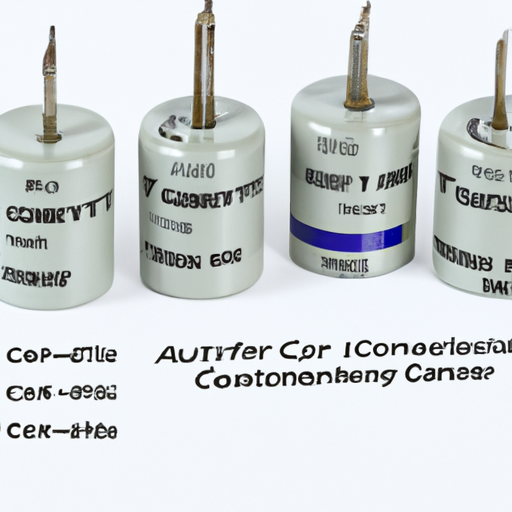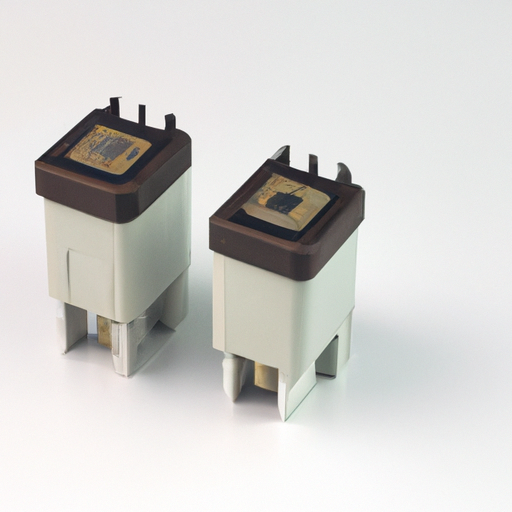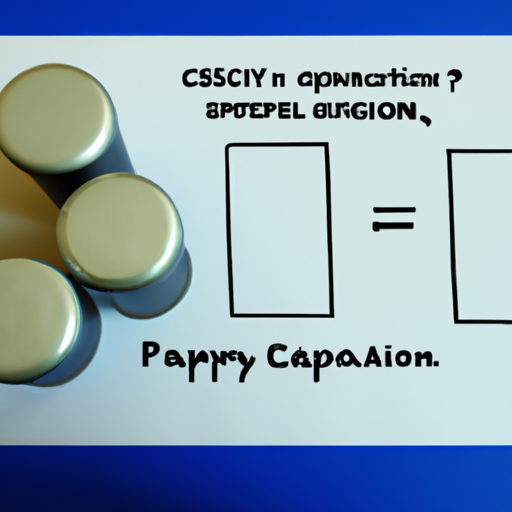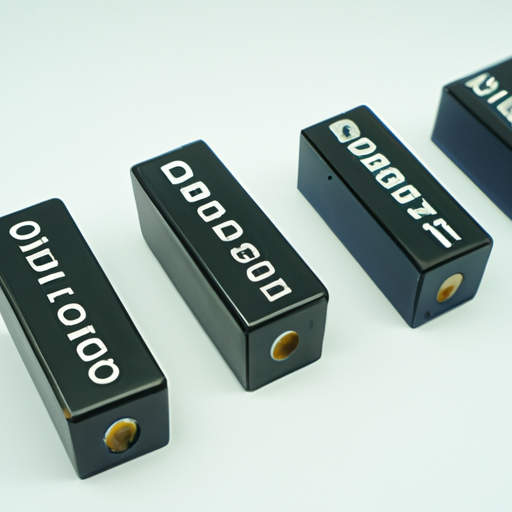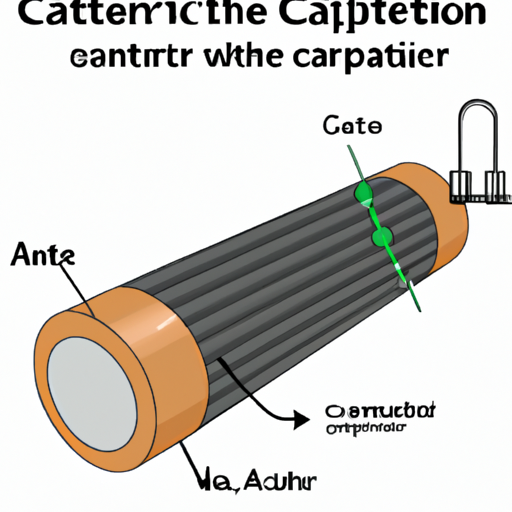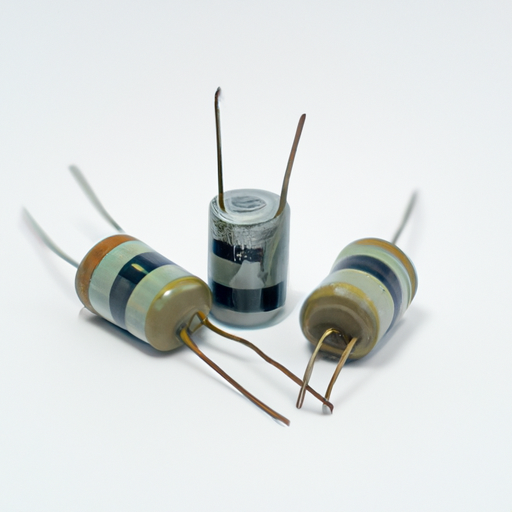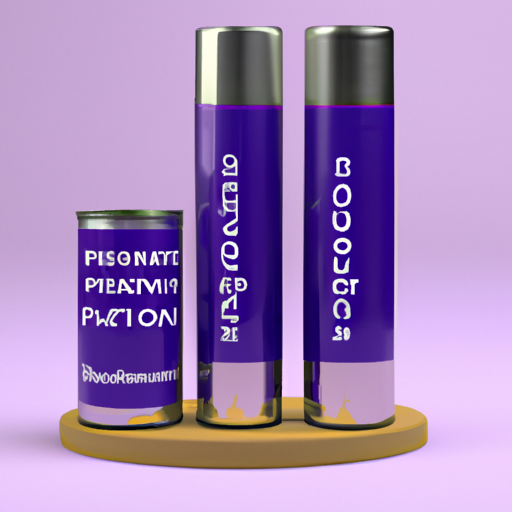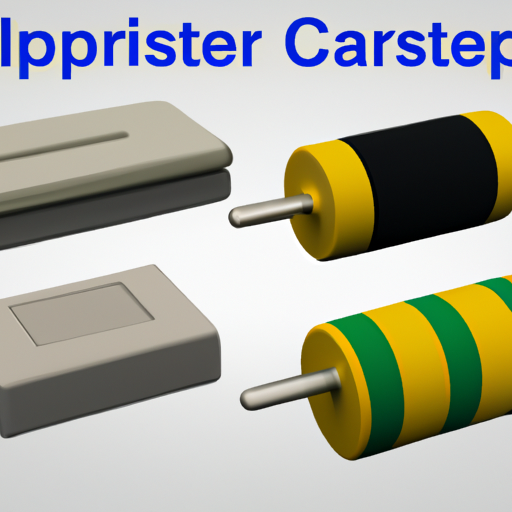Latest Capacitor Current Specifications
I. Introduction
Capacitors are fundamental components in electronic circuits, playing a crucial role in energy storage, filtering, and signal processing. As technology advances, the demand for capacitors with specific current specifications has increased, making it essential for engineers and designers to understand these parameters. This article aims to provide an in-depth look at the latest capacitor current specifications, exploring their importance, recent trends, applications, and future directions in capacitor technology.
II. Understanding Capacitor Basics
A. What is a Capacitor?
A capacitor is a passive electronic component that stores electrical energy in an electric field. It consists of two conductive plates separated by an insulating material known as a dielectric. When a voltage is applied across the plates, an electric field is created, allowing the capacitor to store energy.
1. Components and Construction
The basic construction of a capacitor includes two conductive plates and a dielectric material. The choice of dielectric material significantly influences the capacitor's performance, including its capacitance, voltage rating, and current handling capabilities.
2. Types of Capacitors
Capacitors come in various types, each suited for specific applications:
Electrolytic Capacitors: Known for their high capacitance values, these capacitors are polarized and typically used in power supply applications.
Ceramic Capacitors: These are non-polarized capacitors with a wide range of capacitance values, commonly used in high-frequency applications.
Film Capacitors: These capacitors use a thin plastic film as the dielectric and are known for their stability and low ESR, making them suitable for audio and high-frequency applications.
B. Key Electrical Parameters
Understanding the key electrical parameters of capacitors is essential for selecting the right component for a specific application.
1. Capacitance
Capacitance is the ability of a capacitor to store charge, measured in farads (F). It determines how much energy a capacitor can store at a given voltage.
2. Voltage Rating
The voltage rating indicates the maximum voltage a capacitor can handle without breaking down. Exceeding this rating can lead to catastrophic failure.
3. Equivalent Series Resistance (ESR)
ESR is a measure of the internal resistance of a capacitor, affecting its efficiency and heat generation during operation. Lower ESR values are desirable for high-performance applications.
4. Ripple Current Rating
The ripple current rating indicates the maximum AC current a capacitor can handle without overheating. This specification is critical in applications where capacitors are subjected to fluctuating currents.
III. Current Specifications in Capacitors
A. Definition of Current Specifications
Current specifications refer to the maximum current a capacitor can handle safely without degrading its performance or reliability. These specifications are crucial for ensuring that capacitors operate within their limits, especially in high-demand applications.
B. Importance of Current Ratings
1. Impact on Performance and Reliability
Current ratings directly impact a capacitor's performance and longevity. Exceeding the specified current can lead to overheating, reduced efficiency, and eventual failure. Therefore, understanding and adhering to these ratings is vital for maintaining circuit integrity.
2. Applications in Various Industries
Different industries, such as automotive, consumer electronics, and renewable energy, require capacitors with specific current ratings to meet their operational demands. For instance, electric vehicles (EVs) require capacitors that can handle high ripple currents due to the rapid changes in power demand.
IV. Latest Trends in Capacitor Current Specifications
A. Advances in Materials and Technology
Recent advancements in materials and manufacturing processes have led to the development of capacitors with improved current specifications.
1. High-Temperature Capacitors
High-temperature capacitors are designed to operate in extreme conditions, making them suitable for applications in automotive and aerospace industries. These capacitors can handle higher currents without compromising performance.
2. Low-ESR Capacitors
Low-ESR capacitors are increasingly popular in high-frequency applications, such as power supplies and RF circuits. Their ability to handle higher ripple currents while generating less heat makes them ideal for modern electronic devices.
B. Current Rating Improvements
1. Increased Ripple Current Handling
Manufacturers are continuously improving the ripple current ratings of capacitors, allowing them to handle more significant fluctuations in current without overheating. This enhancement is crucial for applications like switching power supplies and inverters.
2. Enhanced Thermal Management
Innovative thermal management techniques, such as improved heat dissipation designs and materials, have been developed to enhance the performance of capacitors under high current conditions. These advancements help maintain optimal operating temperatures, extending the lifespan of the components.
C. Industry Standards and Regulations
1. IEC, UL, and Other Relevant Standards
Various industry standards, such as those set by the International Electrotechnical Commission (IEC) and Underwriters Laboratories (UL), govern the performance and safety of capacitors. Compliance with these standards ensures that capacitors meet specific current specifications and reliability criteria.
2. Compliance and Testing Methods
Manufacturers employ rigorous testing methods to ensure that their capacitors meet the required current specifications. These tests include thermal cycling, voltage stress, and ripple current testing to validate performance under real-world conditions.
V. Applications of Capacitors with High Current Specifications
A. Power Electronics
1. Inverters and Converters
Capacitors with high current specifications are essential in power electronics, particularly in inverters and converters. These devices require capacitors that can handle significant ripple currents while maintaining efficiency.
2. Renewable Energy Systems
In renewable energy systems, such as solar inverters and wind turbines, capacitors play a vital role in energy storage and power quality management. High current specifications ensure reliable operation under varying load conditions.
B. Automotive Applications
1. Electric Vehicles (EVs)
The rise of electric vehicles has increased the demand for capacitors that can handle high currents. Capacitors are used in various applications within EVs, including energy storage, power management, and regenerative braking systems.
2. Advanced Driver-Assistance Systems (ADAS)
ADAS technologies rely on capacitors to manage power supply and signal processing. High current specifications are crucial for ensuring the reliability and performance of these systems.
C. Consumer Electronics
1. Audio Equipment
In high-fidelity audio equipment, capacitors with low ESR and high ripple current ratings are essential for maintaining sound quality and performance.
2. Mobile Devices
Mobile devices require capacitors that can handle rapid changes in power demand. High current specifications ensure that these devices operate efficiently and reliably.
VI. Selecting the Right Capacitor for Current Specifications
A. Factors to Consider
When selecting a capacitor, several factors must be considered:
1. Application Requirements
Understanding the specific requirements of the application, including voltage, capacitance, and current ratings, is crucial for selecting the right capacitor.
2. Environmental Conditions
Environmental factors, such as temperature and humidity, can impact capacitor performance. Selecting capacitors rated for the specific environmental conditions is essential for ensuring reliability.
B. Guidelines for Choosing Capacitors
1. Manufacturer Specifications
Always refer to manufacturer specifications for current ratings and other electrical parameters. This information is critical for ensuring that the selected capacitor meets the application's demands.
2. Testing and Validation
Conducting thorough testing and validation of capacitors in the intended application environment is essential for ensuring performance and reliability.
VII. Future Directions in Capacitor Technology
A. Emerging Materials and Designs
Research into new materials, such as graphene and advanced polymers, holds promise for developing capacitors with even higher current ratings and improved performance characteristics.
B. Potential for Higher Current Ratings
As technology evolves, the potential for capacitors with higher current ratings will continue to grow, enabling new applications and improving existing technologies.
C. Impact of Evolving Technology on Capacitor Specifications
The rapid pace of technological advancement will drive the need for capacitors with enhanced specifications, pushing manufacturers to innovate and improve their products continually.
VIII. Conclusion
In conclusion, understanding the latest capacitor current specifications is essential for engineers and designers working in various industries. As technology continues to evolve, the demand for capacitors with improved performance and reliability will only increase. By staying informed about current specifications and trends, professionals can make better decisions when selecting capacitors for their applications. The future of capacitors is bright, with ongoing research and development paving the way for innovative solutions that will shape the next generation of electronic devices.
IX. References
1. International Electrotechnical Commission (IEC) Standards
2. Underwriters Laboratories (UL) Testing Methods
3. Academic papers on capacitor technology advancements
4. Industry reports on capacitor applications and trends
This comprehensive overview of the latest capacitor current specifications highlights the importance of understanding these parameters in the context of modern technology and applications. As the field continues to evolve, further research and exploration will be essential for harnessing the full potential of capacitors in electronic design.

